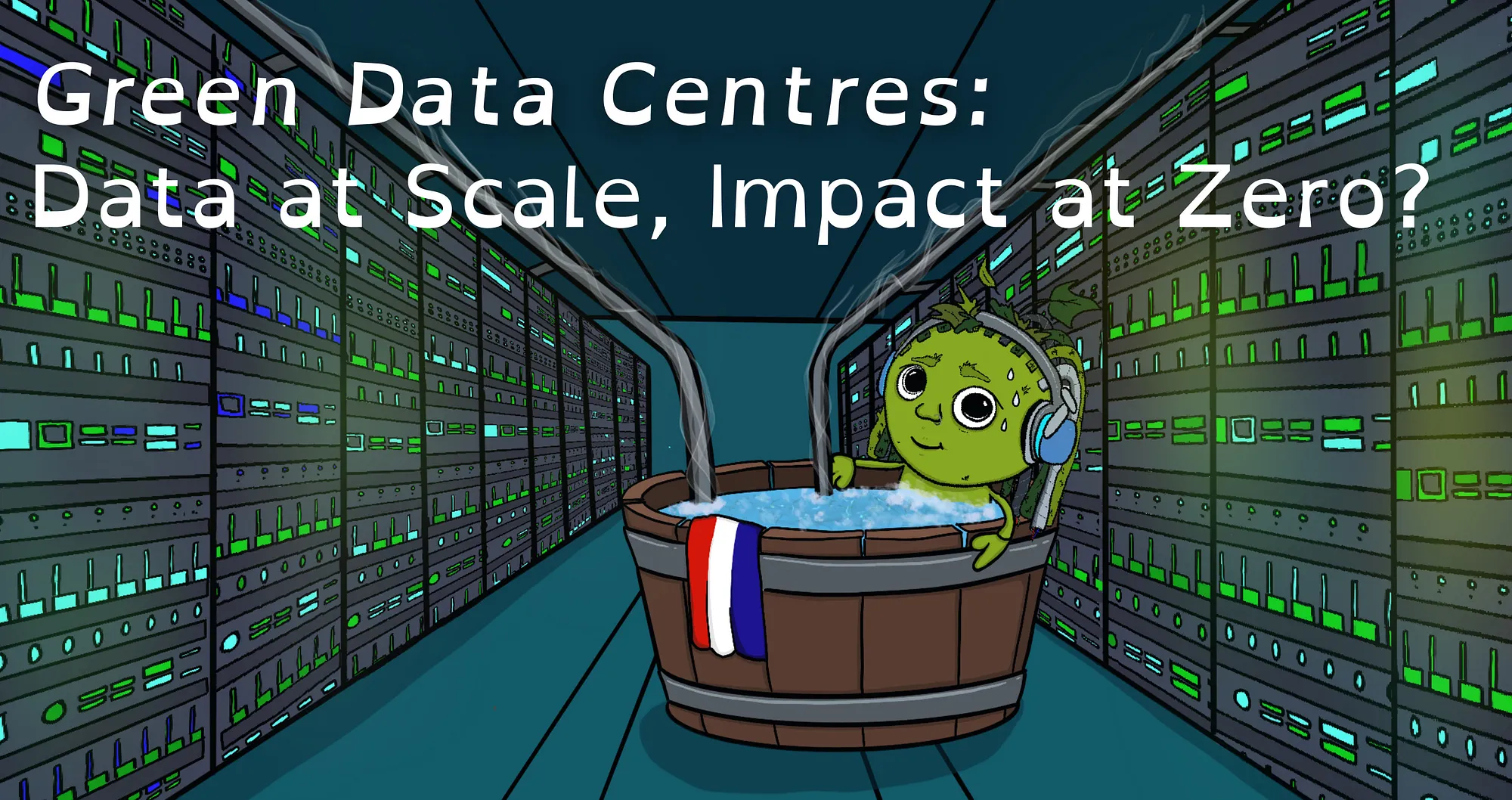Green Data Centres: Data at Scale, Impact at Zero?

As technology scales, data centres quietly contribute more and more to the climate crisis. While estimates vary, the tech industry generates roughly 2–3% of global emissions .
This is a problem because:
-
The ideas of data centres in my head evoke sleek, futuristic, Jetsons-esque visions rather than smoky 19th-century, Sweeney Todd-esque London. I’d like reality to match that.
-
This hidden impact grows as centres consume increasing amounts of energy, water, and land to fuel the 21st century’s insatiable computational needs.
How data centres have adapted to this growing issue is interesting. There are various pillars for data centre providers to work with and adopting these pillars can greatly reduce the negative climate impacts.
Pillar 1: Power Usage
This is the most obvious one. Energy consumption generally seems synonymous with carbon emissions, but with new technologies it’s not that clear-cut.
Data centres are increasingly incorporating renewable energy solutions, both through direct on-site installations like solar panels and wind turbines, and by investing in larger solar and wind farms that contribute to the electricity grids they rely on. While these methods are not entirely reliable (see my post: Follow the Sun ), they do help offset the large amount of energy data centres require.
We do see some data centre providers claiming 100% renewable energy. This is often due to carbon offsetting or carbon contracts, where providers will offset their carbon emissions by investing in renewable energy sources or buy contracts from companies that have renewable energy allowances. This does not necessarily mean that the data centre itself does not use ANY fossil fuels… just that there is a carbon accounting practice in place that zeros out the data centre’s usage. With the new anti-greenwashing laws in the EU, these claims are going to take a big knock. If offsetting is used, companies will have to clearly state that they only compensate for “residual emissions” and explain the specific offset project and its verification standards.
That being said, the growth of data centres and the corresponding energy usage is not linear: “The amount of computing done in data centres more than quintupled between 2010 and 2018 . However, the amount of energy consumed by the world’s data centres grew only six percent during that period, thanks to improvements in energy efficiency.”
Pillar 2: Residual Heat Usage
One thing that data centres generate a lot of is heat. As you can imagine all that hardware running continuously 24/7 results in an excessive amount of heat and that hardware needs to be cooled one way or another. There are various cooling systems that are used, such as air flow and liquid cooling. However in most cases, this heat is just dissipated elsewhere.
A new trend seems to be emerging where data centre providers like Leafcloud and Deep Green take the excessive heat and pipe it towards productive use like heating water for residential builds and hotels. This is becoming so popular that in the Netherlands the Dutch Data Center Association provides all residual heat to the Dutch government for free, and classifies it as a ‘renewable energy source’ (I don’t entirely agree with ‘renewable’, but it’s definitely one step closer to a circular system).
Pillar 3: Water Usage
Data centres have increasingly been under the microscope for water usage. In many instances, water is used as a coolant and pumped through the data centre to cool the hardware components. Microsoft alone estimated that it used 1.7 Billion litres of water in 2022 and even worse, is that it’s believed that half of the data centers don’t even track water consumption .
In many third world countries, where water is already scarce, setting up a data centre that does not take into account water management can have catastrophic implications for the local communities.
Pillar 4: Embodied Carbon
When talking about environmental impact we have to talk about Embodied Carbon .
The hardware lifespan in a data centre is roughly 6 years, and the embodied emissions are around 30% of the overall emissions for that hardware. In other words, increasing hardware lifespan greatly decreases the embodied emissions needed to run a data centre.
Fortunately, it seems there is a growing trend in the industry for providers to lengthen the lifespan, like at Scaleway who increased the lifespan of some of their servers to 10 years! While AWS increased the lifespan of their servers from 5 to 6 years which they predict will also increase their revenue by $900 Million (who says doing the right thing can’t be profitable?)
PUE Scores
A few of the above factors should come together for a metric that data centres use called a PUE Score (Power Usage Effectiveness ). Should because this score is used to determine how environmentally friendly a data centre is but often does not take into account water consumption or embodied emissions.
Generally, a PUE score of 1.0 means that all energy being consumed by the data centre is going towards running the IT hardware of the centre. This is a very difficult metric to hit because excess energy is used for the facility itself (i.e for cooling or water pumping). In the Netherlands all new data centres must have a PUE score of at least 1.2 or lower , but EU data centres on average have a score of more than 1.6 which means there is a lot of room for improvement.
So now what?
While data centers are having quite the impact on the environment, they are definitely providing a lot of value. Data centre providers have more means to optimise their systems for more efficient computing than most companies with a server in their basement. They are also under scrutiny to do better, meaning that there are growing incentives for these companies to reduce the impact that data centres have. Of course, there is also the added value of what the data centres are enabling, which is hopefully a path toward carbon reduction technologies.
At the end of the day, the cloud is here to stay. With more intentions to make it carbon efficient, while also taking into consideration the social impacts of local communities, we’ll get closer to our Jetson-esque visions of the future. 🛸









